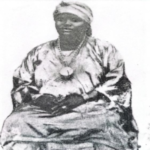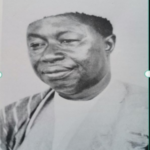NANA ANSA SASRAKU I
Nana Ansa Sasraku I (16? – 1689) was the ruler of Akwamu, a Twi speaking state in what is now south-eastern Ghana. He built it into a wealthy and powerful empire.
The date of the beginning of his rule is uncertain, but it may have been in the early part of the second half of the 17th century. When he ascended the stool, Akwamu was a small state bordered by the Fante states to the west, and by the Densu river, a small stream west of Accra, to the east. Akwamu’s territory then included the land where Akwatia, the diamond mining town, Kwaben, and Asamankese, all in the state of Akyem Kotoku, and the state of Akyem Abuakwa are located today. Asamankese was the first capital of Akwamu.
At the time of Ansa Sasraku’s reign, the capital had been moved to Nyanawase near Nsawam, 22 mi (35 km) northwest of Accra, to take advantage of the opportunities for trade offered by the three European forts on the coast at Accra. Using Nyanawase as his base, Ansa Sasraku conquered the neighbouring states, thus laying the foundations for Akwamu’s imperial policy that was continued by his three successors. Among those he conquered were the Ga of Accra, and the Guan communities in the Akuapem hills, so that his territory stretched to the Volta River to the east.
He also became the controller of the trade paths from the interior which led to the Accra forts of the Dutch, English, and Danes, as well as of the lucrative trade that they generated. The Dutch trader William Bosman wrote a short account of the power and wealth of Ansa Sasraku. He observed: “The king and his Nobles, or rather favourites, are so rich in gold and slaves, that I am of the opinion this country singly possesseth greater treasures than all those we have hitherto described taken together.”
Ansa Sasraku is also believed to have played a decisive role in the creation of the Asante kingdom. Osei Tutu (q.v.), the founder of the Asante kingdom, lived in Akwamu territory, where he appears to have learned a great deal about statecraft. Furthermore, Ansa Sasraku gave him a large body of men to ensure his safe conduct to Asante when Osei Tutu was called to succeed his uncle on his death in about 1680. These Akwamu men remained in Asante and assisted in the building first of Kumase as the centre of the Asante Union, and later, of the Asante empire. In consequence, there has been an Akwamu section in Kumase until the present day.
M. A. KWAMENA-POH


